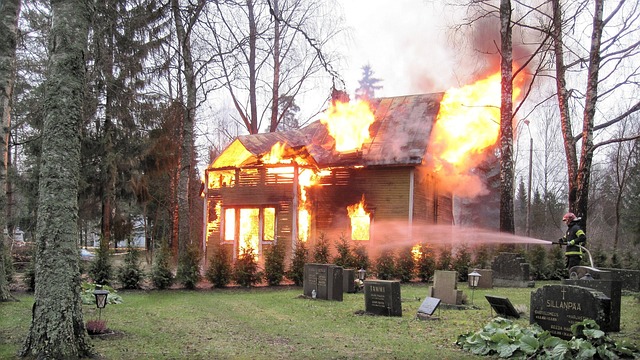Selling a fire-damaged house in California involves several steps, from assessing damage through professional inspections to understanding post-fire property valuation and insurance implications. Homeowners should consult appraisers for impartial evaluations considering repair costs and real estate trends. Insurance adjusters determine insured value, guiding financial recovery but potentially differing from Fair Market Value (FMV). Real estate professionals help set accurate asking prices, prepare properties for listing, address safety concerns, make repairs, remove damage traces, stage homes, and market their transformation potential.
After a devastating fire, assessing and valuing property becomes a complex process. In California, post-fire property valuation is crucial for homeowners looking to rebuild or sell. This article guides you through the intricacies of this process, offering insights into understanding fire damage assessment, insurance roles, and differentiating fair market value from insured value. Additionally, it provides valuable tips for selling your fire-damaged house in California.
- Understanding Post-Fire Property Valuation in California
- Assessing Fire Damage: What to Look For
- The Role of Insurance in Property Valuation After a Fire
- Fair Market Value vs. Insured Value: Unraveling the Difference
- Tips for Selling Your Fire-Damaged House in California
Understanding Post-Fire Property Valuation in California

In California, post-fire property valuation takes on added complexity due to the region’s frequent and severe wildfires. When a fire damages a property, homeowners often find themselves navigating a challenging process to determine the value of their home both before and after the disaster. This is especially crucial for those looking to sell a fire-damaged house in California. The assessment must consider not just the physical damage but also the potential reconstruction costs and any changes in the surrounding area that could impact the property’s future market value.
Professional appraisers play a vital role in this process, offering impartial evaluations that take into account various factors such as the extent of the fire damage, the cost to repair or rebuild, and the current real estate market trends. For homeowners intending to sell, understanding post-fire property valuation is essential for making informed decisions about the future of their home. It can also help them negotiate with insurance companies, assessors, and potential buyers, ensuring a fair outcome in the aftermath of a devastating fire.
Assessing Fire Damage: What to Look For

When assessing a property for sale after a fire in California, it’s crucial to inspect the extent of damage accurately. Start by examining the exterior for signs of charring, melting, or blistering on walls, roofs, and windows. Look for smoke stains, which can indicate where fires spread and how intensely they burned. Check for structural integrity issues like cracked foundations, collapsed ceilings, or uneven floors, as these could impact the property’s safety and value.
Inside, inspect walls, ceilings, and floors for water damage from fire-fighting efforts. Pay close attention to kitchen and bathroom areas, as water was likely used extensively. Look for lingering odors of smoke or mold, which might signal hidden problems. Major appliances, electrical wiring, plumbing, and HVAC systems should be evaluated by professionals to ensure they’re functional and safe. In California, where real estate markets are competitive, understanding the scope of fire damage is vital for setting an accurate sale price on a fire-damaged house.
The Role of Insurance in Property Valuation After a Fire

After a fire, property owners in California often turn to insurance as a crucial step in their recovery process. Insurance plays a pivotal role in post-fire property valuation by providing financial support for repairs or even complete reconstruction. Policies can vary, but typically, the insurance company will assign an adjuster to assess the damage and determine the value of the lost or damaged property. This evaluation is essential for understanding the financial outlay involved in restoring or replacing the affected assets.
When selling a fire-damaged house in California, having the right insurance coverage can significantly impact the valuation process. Insurance adjusters consider the extent of the fire damage, the age and condition of the property before the incident, and the current market value of comparable properties in the area. These factors help establish a pre-and post-fire property value comparison, which is critical for settling claims and determining fair compensation.
Fair Market Value vs. Insured Value: Unraveling the Difference

When a home in California suffers damage from a fire, one of the first questions homeowners ask is, “What’s my house worth now?” It’s natural to think about selling a fire-damaged house, but understanding the difference between Fair Market Value (FMV) and Insured Value is crucial. FMV refers to what a willing buyer would pay for the property in its current state, while Insured Value is the amount covered by your home insurance policy, typically based on the original cost of rebuilding or replacing the home.
For those looking to sell fire-damaged properties in California, it’s important to know that FMV will be lower due to the damage, but it doesn’t mean you’ll receive less compensation. Insurance companies often settle for Insured Value, which may not fully cover renovation costs. However, when selling, a real estate professional can help determine the most accurate FMV post-fire, factoring in potential renovation expenses and current market trends specific to fire-damaged homes in California.
Tips for Selling Your Fire-Damaged House in California

Selling a fire-damaged home in California can be a challenging process, but with the right approach, it’s possible to navigate this difficult situation successfully. The first step is to assess the extent of the damage and understand the repair costs involved. Engage a professional appraiser or inspector who specializes in fire damage assessments to provide an accurate estimate. This will help you set a realistic asking price, ensuring that potential buyers are well-informed about the property’s current state.
Once you’ve determined the fair market value, it’s time to stage and prepare your home for listing. Start by addressing any safety concerns and making essential repairs to make the house presentable. Remove visible signs of smoke and water damage, and consider repainting or replacing affected areas. Efficient staging can transform a damaged property into a desirable residence, attracting buyers who are ready to invest in renovation projects. When marketing your fire-damaged house in California, emphasize the potential for transformation and highlight any recent improvements made during the preparation process.
Post-fire property valuation in California involves a complex interplay of understanding local regulations, assessing damage thoroughly, and navigating insurance policies. When considering selling your fire-damaged house in California, it’s crucial to grasp the difference between fair market value and insured value. By following expert tips on preparing and presenting your home for sale, you can ensure a smoother process and potentially attract buyers who appreciate the unique aspects of your property despite the challenges it has faced. Remember, with the right approach, selling a fire-damaged house in California is not only possible but can also be a successful and rewarding experience.






